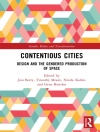From 1960–1980, both eastern and western Europe experienced a construction boom of new dimensions. Cybernetics, the science of planning, and sociology, as well as the new possibilities offered by technology and production, paved the way to large-scale processes and systems in architecture and urban design, which favored technocratic and utopian concepts. Increasingly, architects and planners saw themselves as designers of comprehensive infrastructure and mega-structures in a technology-focused world.
The authors assesses these developments on the back of a knowledge transfer between East and West. It confirms a change in attitude that can still be felt today – recession, social changes, and environmental problems led to criticism of the then contemporary concepts of modernity.
Giới thiệu về tác giả
Ákos Moravánszky, ETH Zürich,
Karl R. Kegler, Hochschule München.












